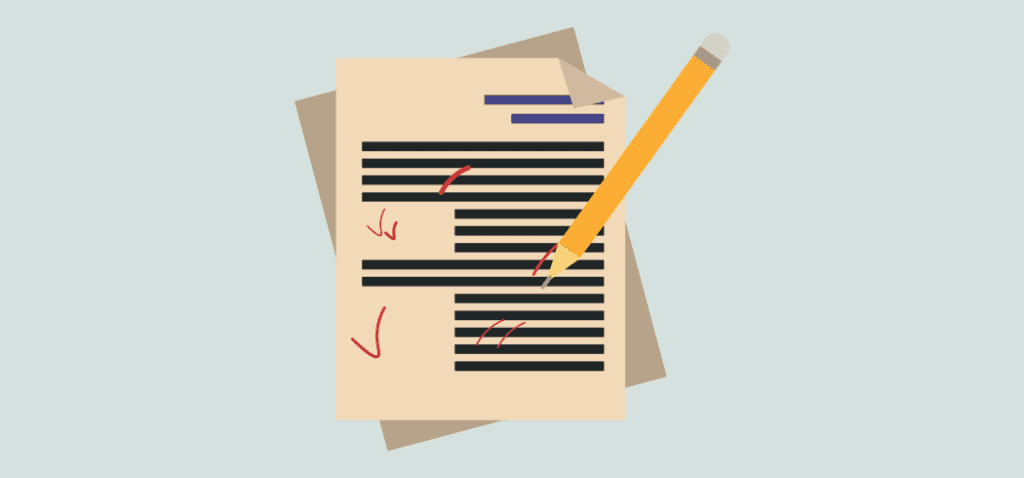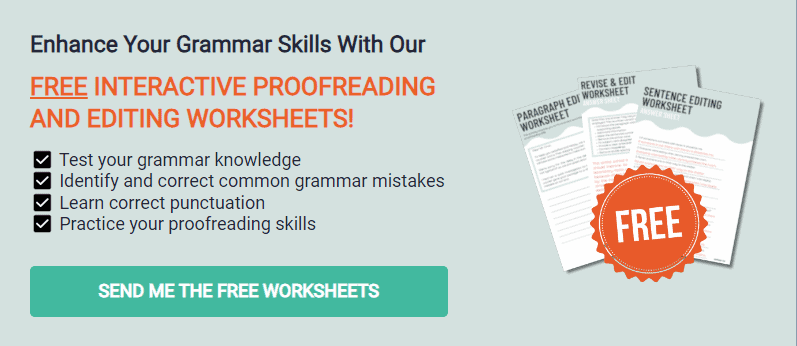The different types of proofreading are crucial for ensuring accuracy in written communication. Proofreading involves carefully checking texts for grammar, spelling, punctuation, and formatting errors. It plays a vital role in conveying messages clearly and professionally.
Often confused with editing, proofreading focuses solely on correcting errors, while editing involves refining the overall content and structure. As an author, proofreading is my last line of defense before publication.
In this article, we’ll explore the different types of proofreading, including academic, technical, and legal. Each type requires specific skills and expertise tailored to its respective field.
Whether you’re a student, a technical writer, or a legal professional, knowing which type of proofreading you need is crucial for producing polished, error-free content. Join us as we dive into the world of proofreading and discover how it can elevate your writing to new heights!
Styles of Proofreading
The different types of proofreading encompass the final step in the editing process and involve several essential tasks, which include:
- Spotting and correcting spelling, grammatical, punctuation, and formatting errors
- Highlighting and changing improper word choices
- Picking up repeated or omitted words
- Ensuring the text adheres to the appropriate style guide for the genre
If you’re an author or content writer, understanding the different types of proofreading will enable you to find the correct kind of service your writing needs. If you want to make a career as a proofreader, this part of my guide might help you choose your preferred proofreading career path.
General Proofreading

General proofreading is typically applicable to all types of content, including books, blog posts, papers, and articles.
A general proofreader reviews written material to spot and fix errors in spelling, grammar, punctuation, typography, formatting, and overall language usage. The main objective is to produce a polished, error-free final draft that follows accepted language conventions.
Note that general proofreading doesn’t involve making significant revisions to the content or structure of the piece.
Academic Proofreading
Academic proofreading entails meticulous scrutiny of academic documents. This type of proofreading demands a thorough knowledge of different style guides. Thesis panelists, professors, and members of the academe are absolutely rigorous on these rules.
Academic proofreaders are intimately familiar with the MLA, APA, and Chicago citation styles and apply them as required by the university or college they are working for.
Academic proofreading also involves applying the correct British or American spelling and formatting rules to the documents you’re working on. Note that the standard font for most essays is Times New Roman 12, with single-line spacing between each line and double spacing between each paragraph.
In addition to spotting grammatical and spelling errors, academic proofreaders might perform some fact-checking, including figures and tables, and checking reference lists for any potential errors. Formal language, overly casual language, and proper numeric lists are also checked, ensuring figures and numbers add up correctly.
An academic proofreader works on various academic papers, which include:
- Theses
- Dissertations
- Research proposals
- Concept papers
- Essays
- College admission essays
- Journal articles
- Personal statements
For students, researchers, and academicians, academic proofreading is indispensable. It safeguards the integrity of their work by ensuring accuracy, consistency, and adherence to scholarly standards. It’s a crucial step in the academic writing process, helping to convey ideas effectively and maintain credibility within the academic community.
Take your grammar skills to the next level
Take Our Copyediting Course
Technical Proofreading
Technical proofreading involves a meticulous review of technical documents such as manuals, reports, and guides, focusing on clarity, accuracy, and consistency in terminology.
Technical proofreaders focus on reviewing documents with the technical, specialist subject matter, including:
- Scientific papers
- Engineering documents
- Technical manuals
- Software documentation
- Technical reports
In this role, proofreaders are familiar with specific industry jargon and technical terminology. They not only look for normal language mistakes but also make sure that technical words, symbols, and numbers are correct and consistent. They also check how things look on the page, like how things are arranged and written.
Ensuring that technical content is error-free is crucial, as inaccuracies can lead to misunderstandings or even safety hazards. Therefore, technical proofreaders need specialized knowledge of the subject matter to identify and correct technical errors effectively.
Legal Proofreading
Legal proofreading involves carefully examining legal documents to ensure they follow all the rules and laws. This includes checking if the correct legal terms are used and the format is correct according to legal standards.
Additionally, it entails meticulously reviewing legal documents to spot errors in spelling, grammar, punctuation, syntax, clarity, and accuracy. This specialized type of proofreading demands a keen eye for detail, familiarity with legal writing styles, and a solid understanding of industry terminology.
Legal documents often use specific terms, citation styles, and phrases, and a legal proofreader ensures these elements are used consistently throughout each document. In addition, a legal proofreader verifies that citations to statutes, cases, and other legal authorities are accurate and correctly formatted.
Accuracy and confidentiality are key in this type of proofreading, and legal documents must be precise and free from ambiguity.
Business and Corporate Proofreading

Business and corporate proofreading includes examining reports, proposals, product descriptions, business reports, user manuals, and press releases. Sometimes, a business proofreader might be asked to review job seekers’ resumes and cover letters.
Branding and maintaining a consistent tone of voice is critical in business documents and posts, and grammar, spelling, and style are also massively significant to organizations and businesses.
Jobseekers also need proofreading services to create a good impression on the company they’re approaching as a potential employer. So, a business proofreader will cross-check their academic qualifications, job experience, and skills to rule out any errors. Page layout, formatting, and the resume’s list of experience must be consistent in structure.
Website Content Proofreading
Proofreading website content involves more than just checking for spelling and grammar errors. It integrates SEO considerations, hyperlink verification, and a focus on creating engaging and accessible content.
Content proofreaders ensure content follows best SEO practices to improve search engine rankings, verify meta tags, and optimize the use of keywords. All hyperlinks included in the document are checked for accuracy, functionality, and relevance.
The language used in the content must be clear, concise, and tailored to the target audience. The document should include headlines, subheadings, and effective calls to action to encourage user interaction with the website.
Essentially, website content proofreaders incorporate elements specific to the online environment, creating polished, effective, user-friendly content.
Comparing Types of Proofreading
The table below shows a comparative analysis of the different types of proofreading we’ve featured in this article. That will help you understand which type of proofreading is most applicable and suitable for your needs.
Proofreading Type
Proofreading Type
Proofreading Type
Proofreading Type
Proofreading Type
Proofreading Type
Applicability
Applicability
Applicability
Applicability
Applicability
Applicability
Focus
Focus
Focus
Focus
Focus
Focus
Goal
Goal
Goal
Goal
Goal
Goal
Suitable For
Suitable For
Suitable For
Suitable For
Suitable For
Suitable For
General Proofreading
All types of content
Spelling, grammar, punctuation, language usage
Producing polished, error-free final drafts
Blogs, articles, books, various content types
Academic Proofreading
Academic papers, theses, dissertations, etc.
Citation styles, formatting, fact-checking
Error-free academic papers with coherent arguments
Students, researchers, academicians
Technical Proofreading
Scientific papers, technical manuals, etc.
Industry jargon, technical terminology, formatting
Clear and precise technical information presentation
Professionals in technical fields
Legal Proofreading
Legal documents
Legal language, citation accuracy, consistency
Clarity, accuracy, adherence to legal conventions
Legal professionals, law firms
Business & Corporate Proofreading
Business reports, resumes, etc.
Consistent tone, branding, grammar
Error-free, well-structured business documents
Business professionals, organizations
Website Content Proofreading
Website content, blogs, articles
SEO considerations, hyperlink verification, engaging content
Polished, SEO-friendly, user-friendly online content
Website owners, content creators
Skills Required for Effective Proofreading
Effective proofreading needs a combination of skills to ensure the clarity and accuracy of the content. A proficient proofreader must scrutinize text meticulously, spotting the smallest errors in punctuation, spelling, grammar, and syntax and knowing how to correct them.
Additionally, a good proofreader will be familiar with style guides, such as the Chicago Manual of Style or the Associated Press (AP) Stylebook. Overall, a successful proofreader can combine precision, grammatical expertise, and adherence to style guides to deliver high-quality, error-free written content.
Conclusion
A nuanced understanding of the different types of proofreading is essential for selecting the correct style for your specific content needs.
Choosing the right types of proofreading for specific content ensures you’ll achieve the end goal you want, whether that’s a precise technical product specification, a correctly formatted legal document, an accurately referenced academic paper, or SEO-optimized web content that’s sure to drive traffic through a website.
Ultimately, recognizing and selecting the correct proofreading style is essential in producing professional, polished content across all genres and industries and delivering the results you want.
I hope this guide on the different types of proofreading helped you choose your specialization in your proofreading career. And for writers, I hope this guide helped you pick the correct proofreading service you need.
